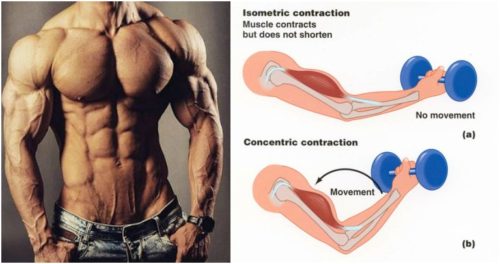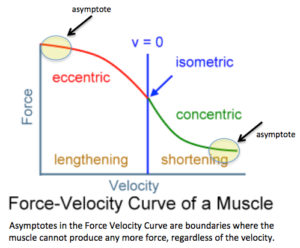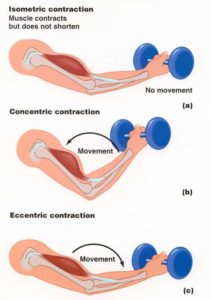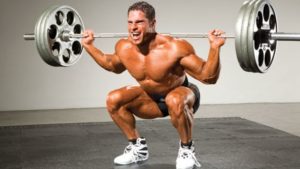Relatively few people are aware of isometrics or give incorporate it in their training programmes. The isometrics have many benefits when it comes to gaining strength, mass and making you more healthy.
Also athletes tend to lack isometric and eccentric strength relatively to their concentric strength.
Even if your goal is to build muscle mass, different approaches activate stimulate muscle growth. Once the body adapts to a type of stimulus it can become more difficult to build added mass.
The isometric methods in this article will allow you to break through growth plateaus easily, but it isn’t going to be pain free. That said, this is one of the most beneficial aspects to incorporate for muscle mass and lean definition.
What Are Isometrics?
Isometrics are exercises implemented, where the muscles are producing force without movement. This is achieved by either pushing or pulling against an immovable resistance.
You can also hold a weight in a certain position for as long as possible, this will also give the desired outcome. In both cases, the intent is different but the external outcome is equal.
When trying to move a resistance that is static, it is called overcoming isometrics. This means you are trying to overcome the resistance, when holding a weight in place and preventing it from dropping is called yielding isometrics.
Although similar looking, they have a slight difference in training effects. Overcoming isometrics have more transfer to concentric strength, this makes them more neurologically demanding.
They are best used for short, very intense exercises and have a greater impact on strength opposed to size.
Yielding isometrics have more transfer to eccentric strength and are less neurologically demanding. These can be performed and be done for longer, they work best to increase size opposed to strength with lifts.
Factor Affecting Strength:
Displaying a high level of force in a specific movement is dependant on many factors:
- The amount of muscle mass you have, the more muscle can help you with a greater strength potential.
- Capacity to recruit muscle fibres, also making the recruited fibres twitch faster. The more they twitch, the more force they produce.
- Co-ordinate recruited fibres. Making the various muscles involved in a lift work more efficiently together, they prevent you from using all the strength you have so you can perform more reps and sets.
You may find yourself having other, more specific issues that lead to sub-optimal performance on a lift.
For example: You may find yourself weaker at a specific point in the range of motion for a lift or be inefficient at recruiting a specific muscle involved in the lift. This could lead to a less efficient motor pattern.
Different isometric methods are going to be extremely effective at improving these factors.
Stimulating Muscle Growth:
There are plenty of factors that affect strength, but there are many factors to stimulating hypertrophy.
One of these factors is the activation of mTor. MTor is the mediator and protein synthesis or muscle-building is the factor. When mTor is activated, protein synthesis is increased. The more it activates, the higher the rate of protein synthesis.
Releasing of local growth factors, specifically mechanical growth factor (MGF), this is a variant of insulin-like growth factor-1 (IGF-1). MGF has a direct impact on making a specific muscle grow.
This is released through muscle damage caused by resistance training, this is when a combined with an accumulation of lactate inside a trained muscle and transient oxygen deprivation of that same muscle.
The last two elements (lactate accumulation and lack of oxygen) are maximised when blood flow to a working muscle is reduced or prevented altogether.
Another way of stimulating muscle growth is by achieving muscle fibre fatigue. The muscle growth stimulated stays the same regardless of how much weight is used This indicates that maximum muscle fibre fatigue is a powerful growth stimulus.
The ability to use all three factors contributes to maximally recruiting or contracting a specific muscle. If you are not efficient at contracting a specific muscle hard during an exercise, you will not optimise any of the three factors mentioned above.
If a muscle is not contracting hard, you are not recruiting a maximum number of fibres including the most growth-prone fast-twitch fibres. Because you can’t fatigue fibres that were not recruited, and a fibre that is not fatigued is not being stimulated, the impact on growth will be limited.
To release local growth factors you need to be able to cause a restriction in blood flow inside a muscle that is contracting long enough to result in a hypoxic state and an accumulation of lactic acid.
To occlude blood flow naturally you need to contract a muscle hard, the harder a muscle is contracting, the more blood flow inside that muscle is reduced. You also need to sustain that contraction throughout the whole set, the moment you release the tension, blood rushes back into the muscle and makes it a lot harder to maximise growth factors.
If you struggle at contracting a muscle hard and maintaining that contraction while moving the weight around, it will be hard to maximise growth factors.
MTor activation is maximised both by accentuating the eccentric portion and by reaching a stretched position while the muscle is contracting. You cannot optimise the process if you are not efficient at creating tension in a specific muscle.
Accentuating the eccentric means flexing the muscle hard, whilst performing the contraction hard throughout all movements of an exercise. If you are not efficient at flexing and contracting a muscle, you can’t maximise growth stimulation.
Movement And Recruitment Patterns:
Performing correctly in an exercise is a function of: Movement pattern and Recruitment pattern.
What’s the difference?
A movement pattern is the execution of a movement or exercise:
- How well you are moving?
- Are you in the correct position at all times?
- Are your joints changing angles with the proper coordination?
Recruitment patterns are the order and magnitude of the contraction of the muscles involved in the exercise. For example:
Two people could have the same technical execution of a lift, but they may use a different recruitment strategy. One may use the quads to do a squat, whilst the other may rely more on glutes. Although the technique of the exercise will still look the same.
Movement patterns are more easy to change than recruitment patterns. It is much easier to correct your posture than to change the contribution of each muscle.
Isometrics are best implemented to work on changing the recruitment pattern or strategy being used during the execution of a movement pattern.
Isometrics To Increase Strength:
Isometric exercises have interesting properties to build strength:
- You can recruit up to 10% more muscle fibres during a maximal isometric action than during a maximal concentric or eccentric action. Because fibre recruitment is one of the key neural factors affecting strength, frequent isometric training can programme your nervous system to become more efficient at recruiting more fibres.
- The firing rate of the recruited muscle fibres is higher during a maximal isometric action than during a maximal eccentric action, it may also be higher than during maximal concentric actions. Over a certain length of time, by using maximal isometric actions, you can train your neuromuscular system to produce a higher firing rate during all types of muscle actions.
- During isometric exercises, strength is gained mostly at the trained joint angle. There is a carryover of about 15 degrees both sides, but the further away you are from the trained angle, the lesser the strength gains. This can be beneficial as it allows you to target a specific portion of the range of motion.
- A certain form of isometrics can be used to desensitise your body’s protective mechanisms: functional isometrics. This is a short range partial lift (around 2 inches of movement) followed by a static hold for around 6-9 seconds. By picking a strong point in the range of motion you can use 20-50% more than your full lift strength. Overtime it will desensitise your protective mechanisms, allowing you to use more of your strength potential.







Post your comment